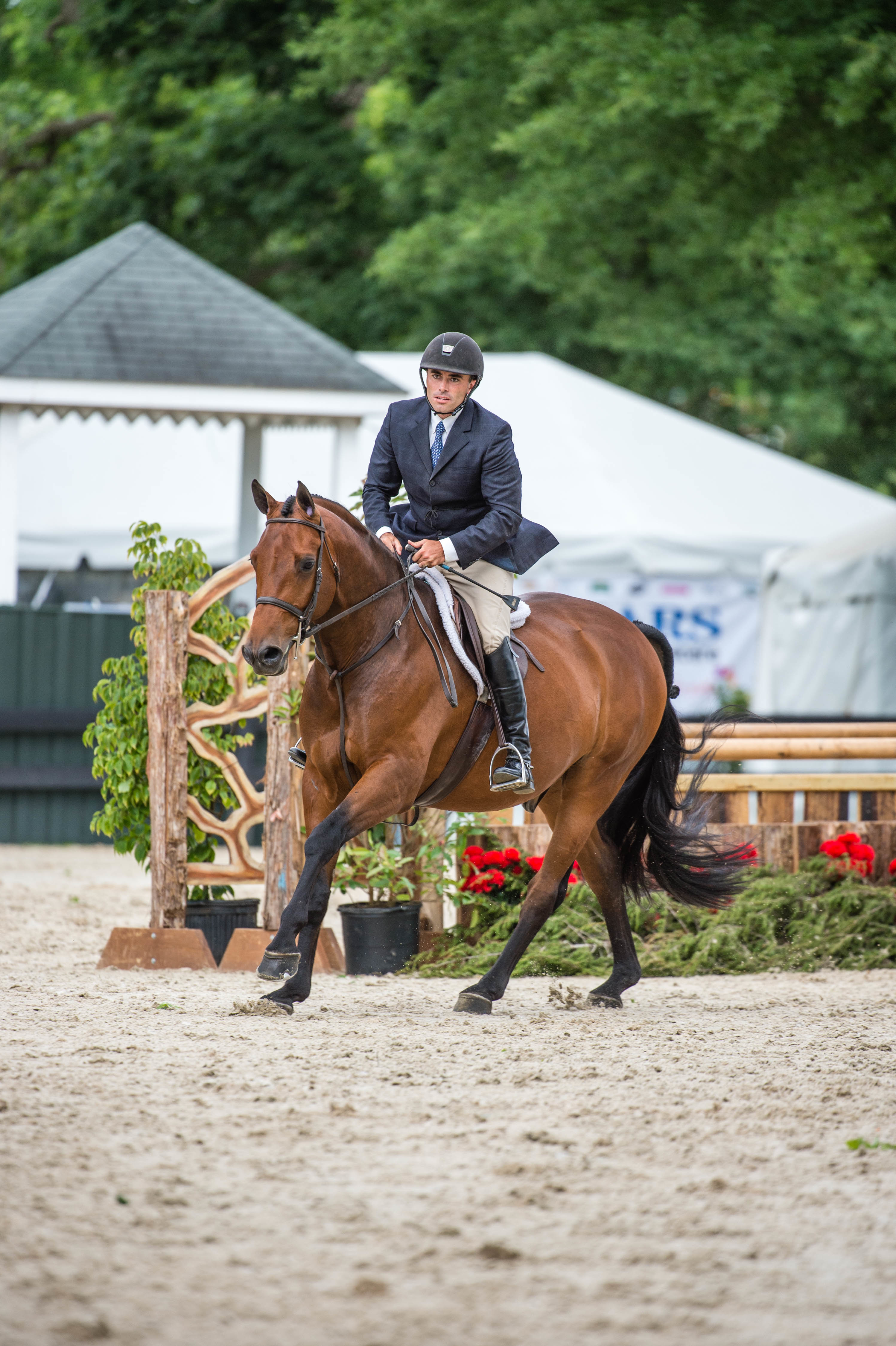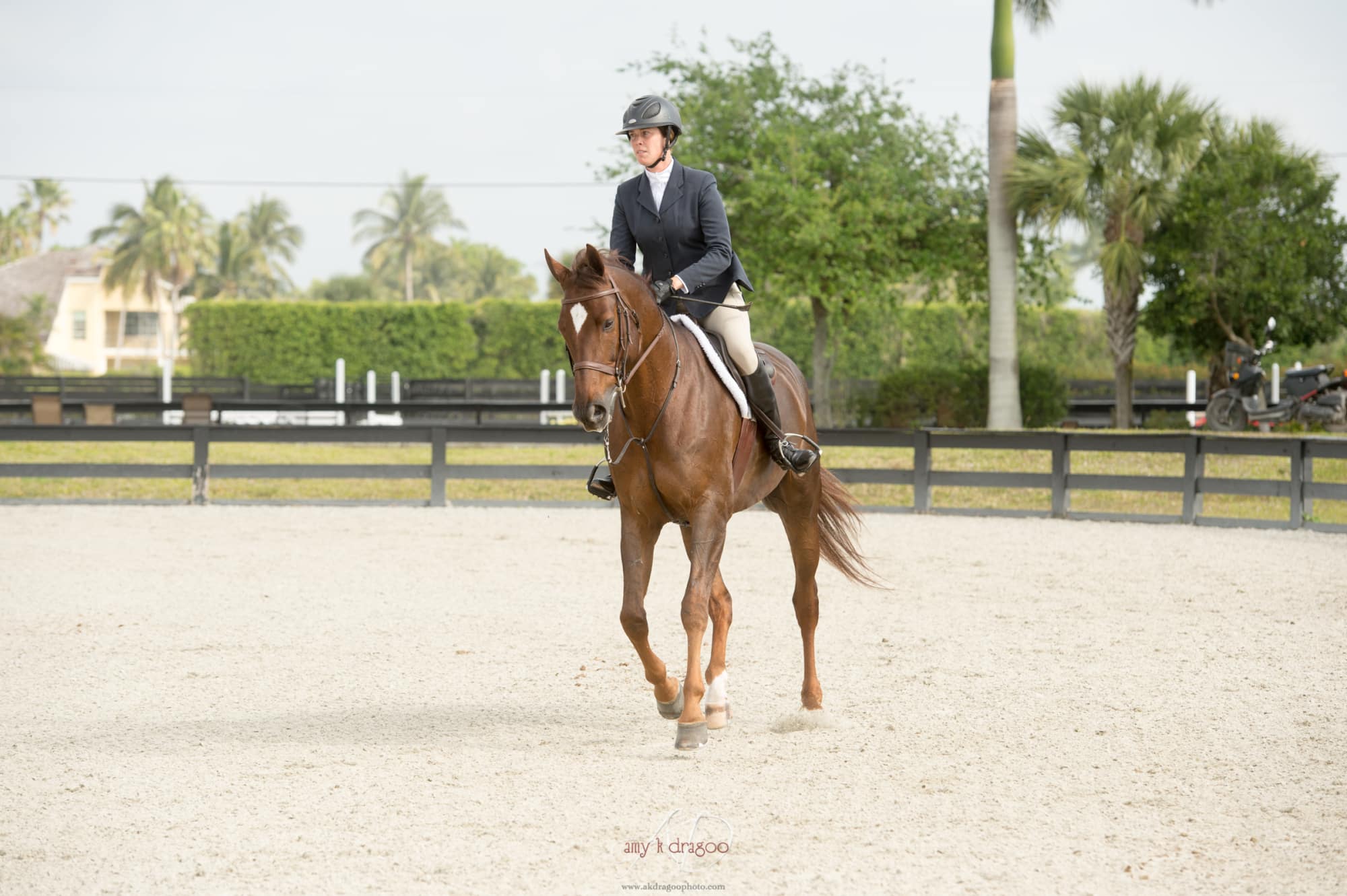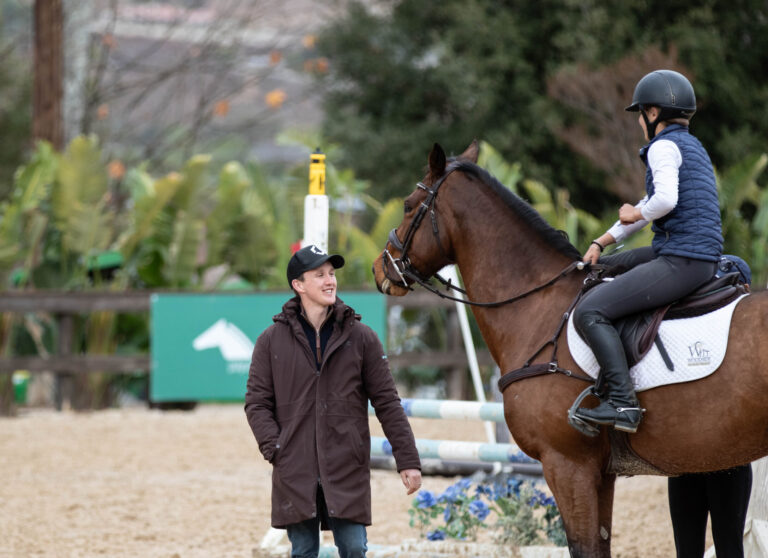1. First Impressions Count
Judges look at the whole picture, says USEF ‘R’ judge Patrick Rhodes. “Is your horse turned out well? Are your boots polished? Does your coat fit? If the overall look and appearance is happy and balanced and the horse has a certain presence, I get excited to watch your round.”
What you do next sets the tone for the judge. Patrick likes to see a rider start the round efficiently and confidently with an “I got this!” attitude. “Pick up a nice gallop in a rhythm and pace that suits your horse, then go straight to the first jump,” advises Patrick. “Don’t tour the whole ring.”
Read more tips: Take Home the Blue

Amy K. Dragoo
2. Wow the Judge Right Away
When deciding how to pin hunter classes, judges ask themselves, “Which of these horses would I most like to ride?” With rounds lasting only 90 to 120 seconds, says hunter rider, trainer and ‘R’ judge Tom Brennan, there’s not much time to demonstrate that your horse is the answer to that question. From the moment you enter the ring to the moment you leave, your performance must exude ease and confidence. Communication between you and your horse should be nearly invisible. Nothing should distract the judge’s attention from his round. In fact, the best riders seem to melt into the scenery—all you notice is the horse. Exceptional hunter riders allow the horse’s expression to come through so every obstacle he meets is simple, forward and enjoyable to watch.
A winning round starts right from your opening canter and first jump. This is not a warm-up or a freebie jump—it counts. Canter the first fence as if you’ve already cantered four jumps. This sets a tone that you plan on doing this round smoothly and with confidence.
3. Ride Preventatively
Before you ride any course, try to anticipate potential trouble spots for your particular horse, says top hunter rider Keri Kampsen. If he’s the type who loses momentum, bulges out and drifts toward the in-gate, plan how you will ride past it. If it’s on the end of the ring or in a corner, make your lead change early, then shave a little off the turn. Carry your whip in your outside hand and raise it slightly so he can see it out of the corner of his eye. Turn his head away from the in-gate and give a cluck to encourage him to keep cantering past it.
A lot of mistakes occur because of poor track riding: cutting corners, overshooting turns, etc. The best remedy is to stay focused and ignore things that distract your horse. Once your eye is on a jump, don’t look away. If you keep riding to it with determination, he will eventually catch up to you.
Read more tips: Show-Ring Fixes

Amy K. Dragoo
4. Maintain Rhythm to Ace the Long Approach
It’s most hunter riders’ nightmare: the long approach to a single fence, says top hunter/jumper rider Nick Haness. This question can be found at the beginning, middle or, most often, at the end of hunter courses at every level. For the horse, the long approach can be tricky if it’s going into or away from the in-gate, encouraging him to rush toward home or be sluggish going away. But this course element is mostly a rider challenge. With so much time to think about how things are going, what you should be doing or not doing and how you will find the distance to the fence, it’s hard to resist the temptation to do something.
Most often, riders interfere with the horse too much. They change the rhythm, move forward or come back because they have a doubt about the distance. Or they over- or under-steer. All of these tendencies circulate back to the mental aspect of the game: It’s hard to sit tight when you have so much time to think. In most cases, giving in to such temptations backfires on you. An example is seeing a distance on approach, then changing your mind and moving up unnecessarily. This causes your horse to take that fast, extra step—a chip—which likely wouldn’t have happened if you had maintained the same canter even if the distance was a little bit off.
Read more tips: Take the Dread Out of the Long Approach
5. Control Your Pace
Having an inconsistent pace not only destroys the nice flow the judge is looking for, but it also interferes with your ability to find the distances to the jumps, says top hunter rider Kristy Herrera. If you approach each fence in a reliable working canter—the canter that hunter courses are generally set for—you’ll have three options for meeting the correct takeoff spot: maintaining your current pace, moving up or waiting. If you approach the jump either too slowly or too quickly, that narrows your options. For example, if you’re going too fast, you’ll arrive at the jump at the end of your horse’s stride—the biggest stride he can make comfortably—which means you’ll have only two options: Either you’ll arrive at the fence on a very long, flat distance or you’ll be forced to shorten his stride at the last minute and get to a too-deep takeoff spot.
Read more tips: How to Pick the Best Pace for Your Courses











